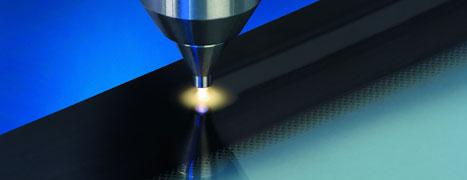Application of Plasma Surface Treatment in TP Bonding
Based on the public’s aesthetics and market demand, more and more terminal products have increasingly heavier screen-to-body ratios. The concepts of various narrow bezels, ultra-narrow bezels, and no bezels are also popular in the industry. Consumers are not inferior to metal in their pursuit. The amount of glass body.
However, due to the limitations of current liquid crystal and structural technology, it is difficult to achieve real frameless mobile phones in industrial design and there is still a long way to go.
In contrast, the narrow frame and ultra-narrow frame technology are not inferior in terms of structural stability and experience. This technology has benefited from the extensive use of terminal products in the past two years, and is also very mature compared to curved screen technology.
However, there are still some detailed problems in the production of ultra-narrow bezels. Since this technology is narrowing the frame as much as possible, the hot-melt adhesive bonding surface between the TP module and the mobile phone case is also smaller (less than 1mm in width), which also causes poor adhesion and glue overflow during the production process. Problems such as uneven spreading of hot melt adhesive.
It is worth mentioning that plasma surface treatment technology has found solutions for these problems that plagued module factories and terminal factories. The plasma surface treatment machine is used in the above mentioned TP module and mobile phone shell bonding process, after plasma surface treatment, there is indeed a great improvement.
During the process, the plasma and the surface of the material undergo microscopic physical and chemical reactions, with a depth of only tens to hundreds of nanometers, which does not affect the characteristics of the material itself, and greatly improves the surface energy of the material, which can reach 50%. -60 dyne (usually 30-40 dyne before treatment, which significantly increases the adhesion between the product and the glue.
The TP module after plasma treatment shows the following advantages:
1. The surface activity is enhanced, and the bonding with the shell is firmer to avoid the problem of degumming.
2. The hot melt glue spreads evenly to form a continuous glue surface, and there is no gap between the TP and the shell.
3. Because of the increase in surface energy, the hot melt adhesive can be spread thinner without reducing the adhesion. At this time, the amount of glue can be reduced, and the cost can be reduced. About 1/3 of the amount of glue can be saved.
In addition, compared with similar equipment, the advantages of plasma surface treatment machine in the treatment process are more obvious.
First, the plasma flame width is smaller, the minimum is only 2mm, which does not affect other areas that do not need to be treated, and reduces the occurrence of accidents; secondly, the temperature is lower. Under normal use, the plasma flame temperature is about 40-50 ℃, will not cause high temperature damage to the reflective film, LCD and TP surface. In addition, the equipment adopts a lower potential discharge structure, the flame is electrically neutral, and does not damage the TP and LCD functions. After the product has been processed ten times in a row, the TP capacity and display performance will not be affected.
With the development of smart phones today, every time a terminal manufacturer launches a product, it is bound to pursue excellence on the basis of the past. As for the module factory, although different processes used in the traditional manufacturing process can complete the same operation, the ultimate goal should be to achieve an overall improvement in the product quality rate through continuous improvement of the manufacturing process.

评论
发表评论